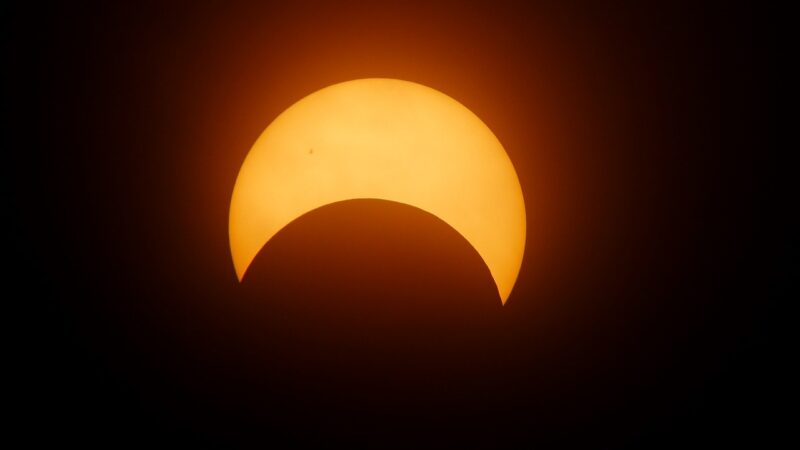
Eclipses—the celestial events that have fascinated humanity for thousands of years—are instances when the Sun, Moon, and Earth align in a cosmic dance. While modern astronomers can predict these occurrences with precise calculations, early civilizations demonstrated an astonishing ability to anticipate them. This article explores how ancient cultures, armed with rudimentary tools and observational skills, achieved mastery over predicting eclipses.
1. Understanding Eclipses
Before delving into the methods used by early civilizations, it’s essential to understand what eclipses are. There are two main types of eclipses:
- Solar Eclipse: Occurs when the Moon passes between the Earth and the Sun, blocking the Sun’s light completely or partially.
- Lunar Eclipse: Happens when the Earth passes between the Sun and the Moon, causing the Earth’s shadow to fall on the Moon.
Understanding the mechanics of these events allowed ancient astronomers to notice patterns in celestial behavior. By observing the cycles of the Moon, they could predict when eclipses were likely to occur.
2. Ancient Observations and Record Keeping
Many early civilizations relied heavily on careful observations of the sky. The ancient Babylonians, for instance, were meticulous observers, documenting astronomical phenomena as early as 2,000 BC. They noticed a consistent pattern in the timing of solar and lunar eclipses, which allowed them to formulate rudimentary predictive models.
Their expertise can be attributed to a few key components:
- Long-Term Observations: The Babylonians tracked celestial events over generations, cultivating vast records that led to better understanding and prediction of eclipses.
- Mathematical Calculations: They relied on mathematical models derived from their observations. One notable advancement was the Saros cycle, a period of about 18 years that helped them predict solar and lunar eclipses with remarkable accuracy.
- Rituals and Cultural Significance: For many cultures, eclipses held astrological importance, marking them as events of great significance that called for observation and interpretation.
Their careful tabulation of observations paved the way for accurate eclipse predictions that astonished those who witnessed them.
3. The Mayans: Astronomical Wizards
Among the ancient civilizations, the Mayans stood out for their exceptional understanding of celestial mechanics. Their civilization, flourishing between 250 AD and 900 AD, produced sophisticated astronomical tools and calendars.
Key strategies employed by the Mayans included:
- Advanced Calendrical Systems: The Mayans developed a complex calendar system that included the Tzolk’in (a 260-day ritual calendar) and the Haab’ (a 365-day solar calendar). They calculated and tracked astronomical events, ensuring they could anticipate eclipses with accuracy.
- Eclipse Tables: They created specific tables detailing predictions of solar and lunar eclipses, which allowed them meticulous planning for significant events, ceremonies, and agricultural practices.
- The Codex and Notation: The Dresden Codex, an ancient Mayan manuscript, includes almanacs that describe lunar eclipses. These records demonstrate their understanding of the Moon’s cycles and eclipses’ predictability.
The Mayans utilized their knowledge to not only predict eclipses but also to align agricultural and ceremonial activities with these celestial events.
4. The Role of Cultural Beliefs in Eclipse Predictions
The significance of eclipses transcended mere celestial observation; it was deeply rooted in the cultural beliefs and spiritual practices of early civilizations. Eclipses were often seen as omens or messages from the gods, influencing the prediction methods adopted by various cultures:
- Astrological Significance: Many ancient observers believed that eclipses predicted specific events, such as the rise or fall of kings, plagues, or natural disasters, thus motivating them to predict eclipses accurately.
- Ceremonial Observations: Civilizations like the Aztecs and incas viewed eclipses as times for rituals to appease the gods or avert disaster. This led them to refine their observational practices to ensure accurate predictions.
- Use of Astronomy in Governance: Leaders used predictions of eclipses to wield power. By demonstrating knowledge of celestial events, they could enhance their status and influence over their subjects, further motivating more diligent cosmic observation.
Thus, the interplay between scientific observation and cultural belief drove civilizations to develop and refine their eclipse prediction techniques.
5. Ancient Greece: Theoretical Foundation
The ancient Greeks, especially philosophers like Anaxagoras and Ptolemy, made invaluable contributions to our understanding of eclipses:
- Theory to Explain Phenomena: Anaxagoras was one of the first to propose a scientific explanation for eclipses, asserting that they occurred due to the obstruction of light, particularly how the Earth’s shadow falls on the Moon during a lunar eclipse.
- Mathematical Models: Ptolemy’s work involved complex models predicting celestial events based on circular orbits, which improved the understanding of eclipse cycles over time.
- Documentation and Influence: Their philosophical discussions laid the groundwork for later astronomers, creating a chain of knowledge that would inform scholars for centuries to come.
The Greeks’ combination of observational data and theoretical thinking significantly enhanced the predictive capabilities for eclipses.
6. Conclusion: The Legacy of Early Eclipse Predictions
The ability of early civilizations to predict eclipses with stunning accuracy is a testament to their keen observational skills, mathematical innovations, and deep understanding of the natural world. From the Babylonians and Mayans to the Greeks, each civilization contributed unique insights that would shape our current understanding of astronomy.
Their legacy teaches us that even in the absence of modern technology, human curiosity and dedication to observing the universe can yield remarkable achievements. By studying their approaches, we gain a deeper appreciation for the rich tapestry of human knowledge and our enduring quest to understand the cosmos.
As we continue to marvel at the beauty of celestial events like eclipses, we can look back with respect and admiration for those ancient astronomers whose insights paved the way for modern science.






